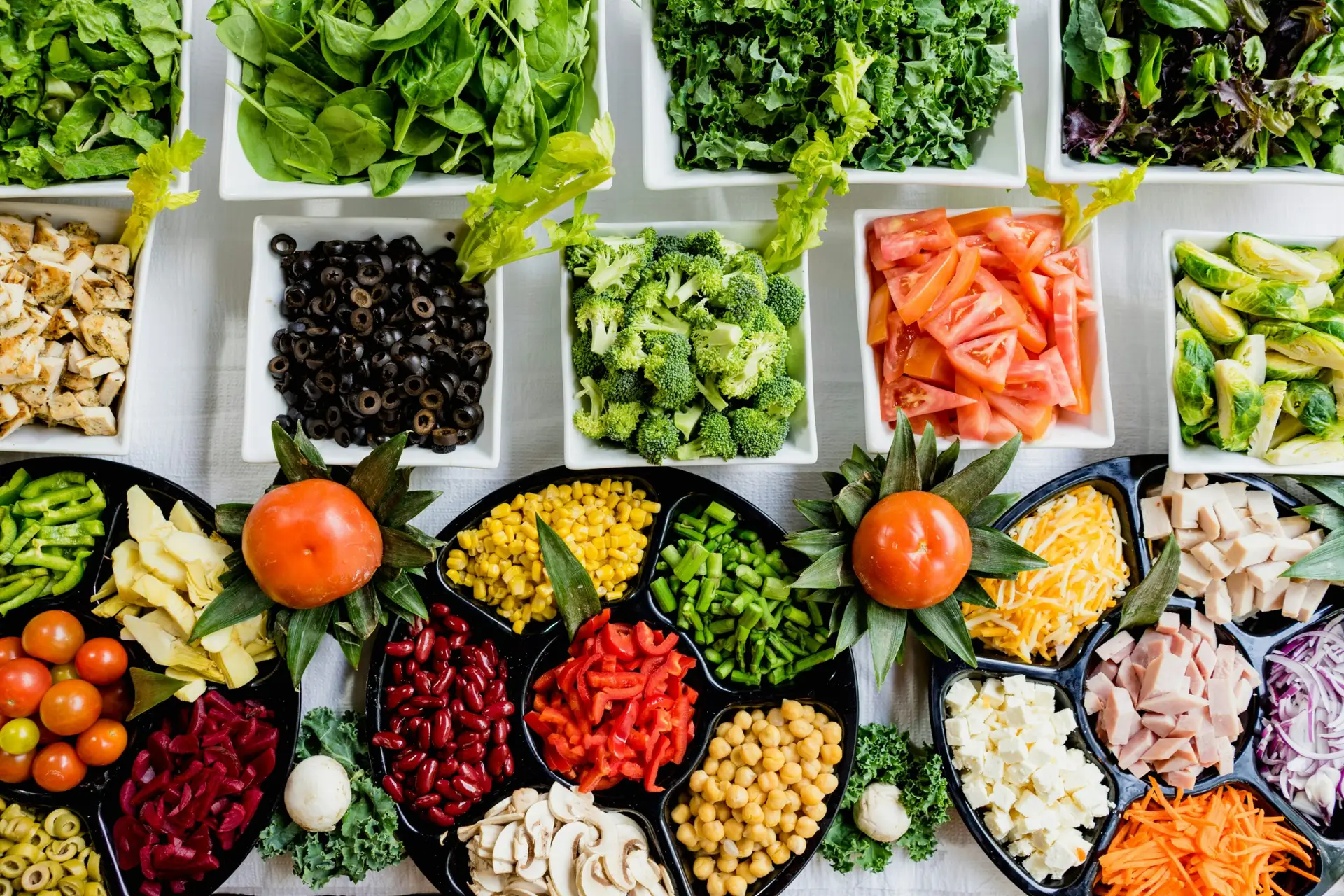Fun fact: When Pizza Hut began opening restaurants in China, they didn’t want to be seen as cheap, unhealthy American fast food. Instead, they branded themselves as a delicious, high-quality, healthy restaurant. To help push that brand identity, each restaurant had a large salad and fruit buffet. However, the rule was that each guest was only allowed to make one trip to the salad buffet, and they were only allowed to fill one plate.
This led many Chinese diners to start “salad stacking.” Guests would create incredible towers of fruits and vegetables to outsmart Pizza Hut’s one-trip, one-plate rule. “Salad engineers” began sharing tips in online chat rooms on how to build your salad stack correctly. They directed people to start out with a solid foundation of carrot sticks, then use cucumbers, croutons, or other square fruits as bricks to build the walls, and fill the center of the structure with foods that didn’t stack very well.

The fad of salad stacking spread like wildfire on Chinese social media, and people built some pretty impressive structures. In 2009, Pizza Hut removed the salad and fruit buffets from their Chinese restaurants.


Also read: How a 2 Year Old Boy Orders 31 Cheese Burgers from Door Dash?
Detailed Story of Pizza Hut in China.
Pizza Hut’s Unique Approach in China
When Pizza Hut set up its vibrant outlets in China, they didn’t want to be recognized simply as a fast-food chain. Instead, they aimed to carve out a niche for themselves as a premium dining option. To embody this image, they introduced an impressive salad and fruit buffet, encouraging diners to indulge in fresh, wholesome offerings.
The One Plate, One Trip Rule
To maintain their upscale vibe, each guest was given a unique rule: only one trip to the buffet and one plate! This sparked a creative challenge for diners who were keen to make the most of their single trip. Enter the phenomenon of salad stacking! Many inventive eaters began leveraging this rule to construct towering salads that were both impressive and filled to the brim with colorful fruits and veggies.
Salad Stacking: A Culinary Challenge

The salad stacking trend quickly took over social media, as aspiring salad engineers began exchanging tips and tricks in online chat rooms. They recommended starting with a sturdy foundation of carrot sticks and then stacking various square items, like cucumbers and croutons, to create solid walls. As restaurateurs watched these colorful structures flourish, they must have marveled at how a simple dining rule prompted such creativity!
Sadly, in 2009, Pizza Hut decided to eliminate the salad and fruit buffet from their Chinese locations, putting an end to the salad stacking craze. Nevertheless, the legacy of those towering salads lives on, reminding us all of the intersection of culinary creativity and dining experiences!



Conclusion
In the end, the story of Pizza Hut’s salad stacking in China is a delightful reminder of how people can get creative when faced with a challenge. It’s fascinating to see how cultural differences and a bit of ingenuity can turn a simple dining rule into a fun and memorable experience. The salad stacking craze not only brought out the inner architect in many diners but also created a unique sense of community. So next time you’re at a buffet, remember the cleverness of those “salad engineers” and maybe try a little stacking of your own!








